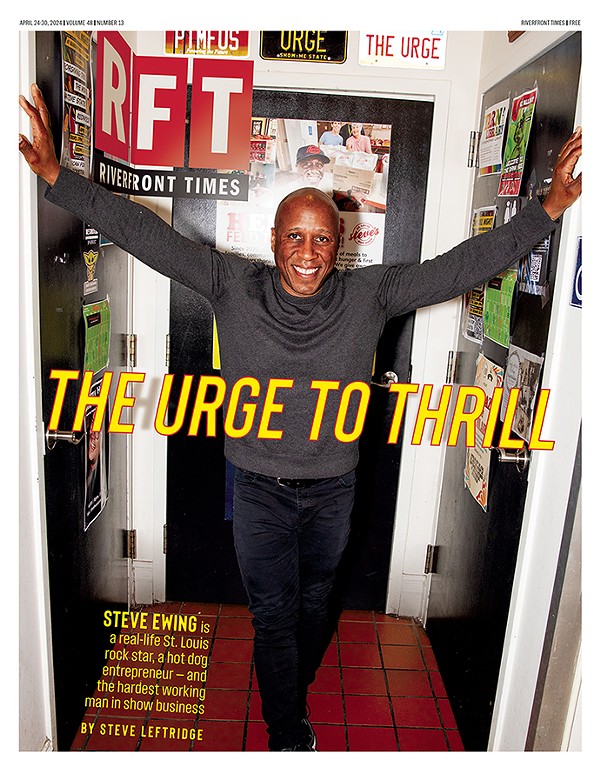A Webster Groves lawyer who represents death-row inmates, Rafert had witnessed two executions. Both had gone smoothly, as if the person on the gurney were being put to sleep. Rafert says she was merely curious when she asked for the state's how-to manual. Commonly called the execution protocol, the document describes in minute detail how the state administers lethal injections, from the chemicals used to the timing of the final meal to conditions in the holding cell where the condemned spend their last hours.
More than three years later, Rafert's curiosity has turned into suspicion. She's suing the state to force disclosure of a record that corrections officials insist should remain secret. The case is set for trial on January 30 in Cole County Circuit Court.
The state claims that prison safety and security would be jeopardized if the protocols were made public. Rafert doesn't buy it.
"I think they're afraid of bad press more than security issues," she says. "I really don't want to know where guards are with guns and that kind of thing. I'm very interested in the chronology of the execution, as far as what transpires and when, particularly from the last meal and medications given along the way. I want to know details about how big the tubing is and the size of the needles used."
Rafert's quest began in the spring of 1999 with phone calls to corrections officials. "At that time, they told me they would send me a copy of the execution protocol," she says. "I made a couple more phone calls, telling them I had not received it. They told me, 'Oh, it's on the way -- check's in the mail.'" In the fall of that year, Rafert says Dora Schriro, then director of the Missouri Department of Corrections, told her to put her request in writing. Rafert made her written request nearly a year later after witnessing what she thinks was a botched execution.
The Associated Press reported that Bert Hunter, one of Rafert's clients, coughed before he died. Rafert says it was much more than a cough. Hunter's face twisted in agony almost immediately after he flashed a thumbs-up sign in her direction. Then he went into convulsions that lifted his torso high enough that Rafert could see padding beneath his body. "He flopped back and forth, convulsing, up and down, back and forth, about seven times," she recalls. "Then he finally fell back. His mouth was in a really grotesque position -- distorted and twisted and convoluted. His eyes were open. His arm was stiff. I was really shocked."
On the basis of conversations with a doctor who hadn't been present, Rafert says she believes a drug that was supposed to render Hunter unconscious may not have taken effect before chemicals that stopped his lungs and heart entered his bloodstream. In essence, his heart burned from potassium chloride while he suffocated, and he felt every bit of it.
Two weeks after Rafert made her written request, corrections officials told her that the protocol couldn't be released because of safety and security concerns. Rafert didn't give up. She asked for a copy with security information taken out. She got thirteen pages of a protocol that's at least 76 pages long. She didn't even get a full table of contents.
Missouri hasn't always been so secretive about how the death penalty is applied.
In his 1992 book The Execution Protocol, British author and filmmaker Stephen Trombley writes that he was allowed to read the protocol and take extensive notes. Trombley also quotes from a log kept during the 1991 execution of Maurice Byrd, noting what time Byrd entered the death chamber, that he was restrained six minutes later and that 51 minutes passed between the time he was strapped to the gurney and the time he was pronounced dead.
Trombley also interviewed -- and named -- executioners and their assistants, including a prison doctor who revealed that executioners say the word "foxfire" when pressing buttons that release deadly chemicals. When a heart monitor flatlines, the "event coordinator" says "checkmate" as a signal to guards, who then close a screen so observers can't see the doctor examining the inmate to make sure he's dead, the doctor told Trombley.
Corrections-department officials treat Trombley's book as if it didn't exist.
In a deposition, George Lombardi, director of the Division of Adult Institutions, says the state has never made public its execution protocol and that he wasn't aware that Trombley was allowed to read it. Although he's never read the book, Lombardi says he doesn't consider Trombley credible, though he can't cite any inaccuracies -- he says he bases his judgment on what others have told him.
Repeatedly in the deposition, Lombardi insists that the state can't release the protocol without compromising safety and security. Burton Newman, an American Civil Liberties Union attorney who is representing Rafert, ticked off information that his client wants, with Lombardi responding that releasing the information would be dangerous. The number and qualifications of executioners, when a prisoner is supposed to be escorted from his holding cell to the death chamber, how many visitors are allowed in the holding cell, instructions given to witnesses, maintenance procedures for the lethal-injection machine, the amounts of chemicals used, the size of needles and IV tubes, who reads the death warrant to the inmate, the protocol's table of contents and his own duties as a division director would all constitute threats to the prison system if that information became public, Lombardi claims.
The protocol is written in such a way that generic information about the mechanics of lethal injection is intertwined with sensitive facts that could be used by inmates to figure out the names of prison employees who carry out executions, Lombardi says. There are risks beyond inmates' being able to identify employees who play roles in executions, Lombardi says, but he won't elaborate, again citing security concerns. Revealing the nature of any threat would in itself constitute a threat to institutional security, he says.
Lombardi says someone other than a condemned inmate has been harmed as a result of a lethal injection, but he won't provide any details. "To give you that information would be revealing security issues, and I'm not about to do that," he says. He says that prison officials have twice encountered physical resistance during executions, but he won't say more than that, including exactly what kind of resistance was met. Again he says such information would jeopardize security.
Lombardi, who has held his post since 1986, does say that no one has been harmed as a result of execution procedures' becoming public.
Missouri is one of the most secretive states in the nation when it comes to executions, says Deborah Denno, a Fordham University law professor who has studied execution procedures in the 36 states that use lethal injection. In her 226-page study published earlier this year in the Ohio State Law Journal, Denno writes that a Missouri corrections official told her that the state has no written protocol detailing lethal-injection procedures. That's typical for states where the death penalty has become routine (Missouri, which has executed 59 inmates, ranks third in the number of executions since a nationwide moratorium ended in 1977). "The irony is that states that execute the most provide the least amount of information," Denno says.
Rafert says she thinks Missouri corrections officials may have learned a lesson from Trombley, who brought a camera onto death row and produced a documentary the year after his book was published. The film was shown around the world, including on the Discovery Channel. Reviewers praised its intimate look at how the death penalty is applied in Missouri. "The Execution Protocol ... is so coolly and carefully constructed that it can apparently be interpreted as an audio-visual aid if you happen to be in the business of legalized killing," wrote [the late] Vincent Canby of the New York Times.
The film sparked worldwide interest in the plight of A.J. Bannister, who was featured in the movie and executed four years later, despite protests from as far away as Australia. Prison officials didn't look as sympathetic. "Not surprisingly, the warden, the 'death protocol committee' and, especially, the prison doctor come off like inhuman automatons and, occasionally, buffoons," wrote Jeff Menell in the Hollywood Reporter.
Rafert says she believes corrections officials are worried about another backlash if they release the protocol, which has been updated seven times since Trombley visited death row.
"They were rather open at that time in releasing this type of information," Rafert says. "I think they may be concerned if they release this information, that it could somehow bring about the downfall of the death penalty in Missouri."





